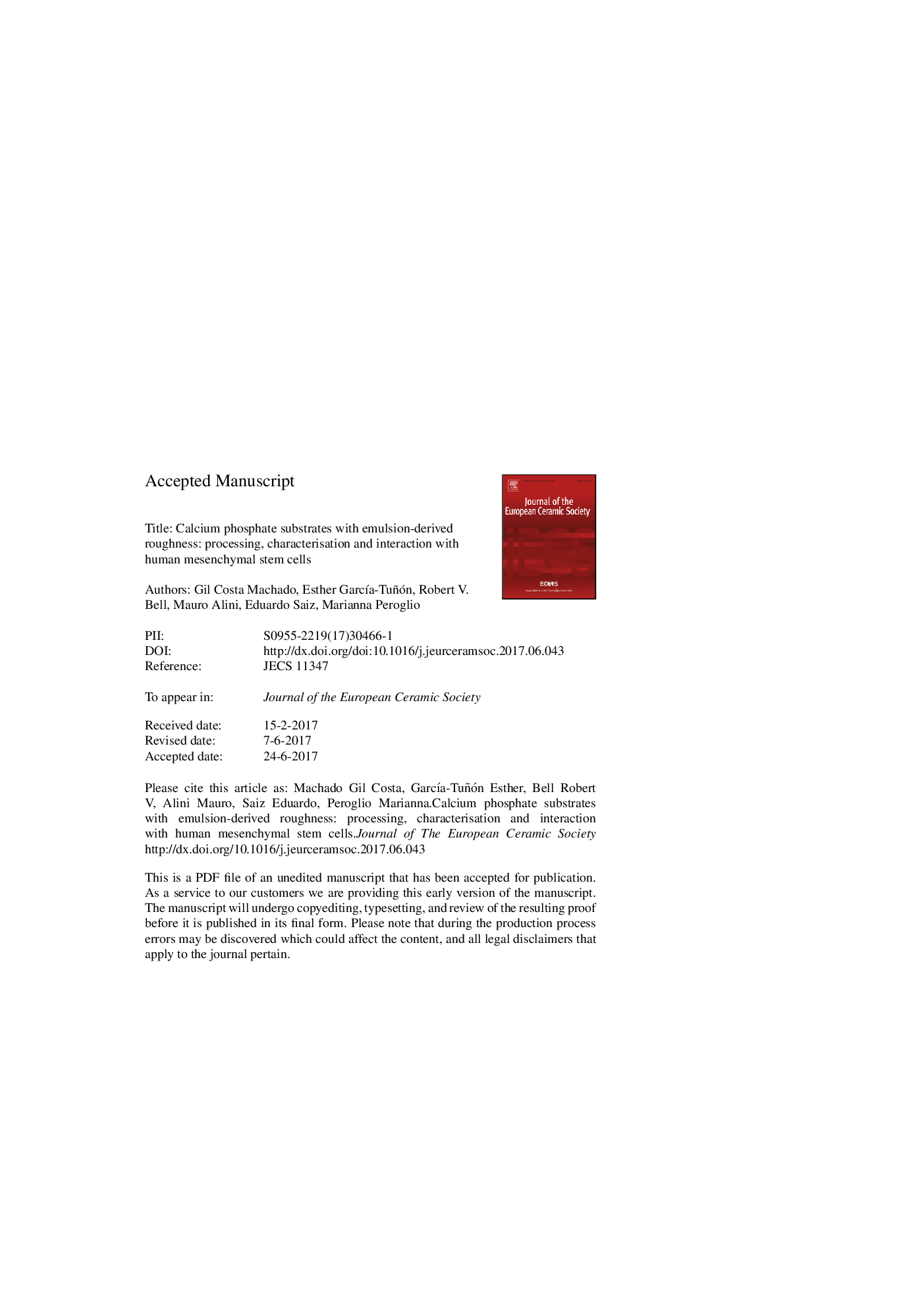| Article ID | Journal | Published Year | Pages | File Type |
|---|---|---|---|---|
| 7898563 | Journal of the European Ceramic Society | 2018 | 37 Pages |
Abstract
Calcium phosphates (CaP) have been the subject of several studies that often lack a systematic approach to understanding how their properties affect biological response. CaP particles functionalised with a pH-responsive polymer (BCS) were used to prepare microporous substrates (porosity between 70 and 75% and pore sizes of 5-20 μm) through the aggregation of oil-in-water emulsions by controlling solid loading, emulsification energy, pH, drying and sintering conditions. The combined effect of surface roughness (roughness amplitude, Ra between 0.9-1.7 μm) and chemistry (varying Hydroxyapatite/β-Tricalcium phosphate ratio) on human mesenchymal stem cells was evaluated. HA substrates stimulated higher cell adhesion and proliferation (especially with lower Ra), but cell area increased with β-TCP content. The effect of surface roughness depended of chemistry: HA promoted higher mineralising activity when Ra â¼Â 1.5 μm, whereas β-TCP substrates stimulated a more osteogenic profile when Ra â¼Â 1.7 μm. A novel templating method to fabricate microporous CaP substrates was developed, opening possibilities for bone substitutes with controlled features.
Related Topics
Physical Sciences and Engineering
Materials Science
Ceramics and Composites
Authors
Gil Costa Machado, Esther GarcÃa-Tuñón, Robert V. Bell, Mauro Alini, Eduardo Saiz, Marianna Peroglio,
